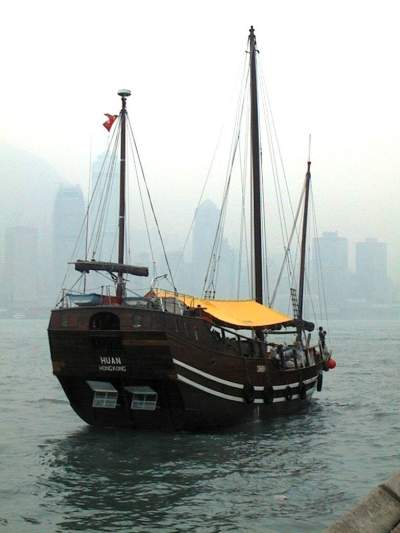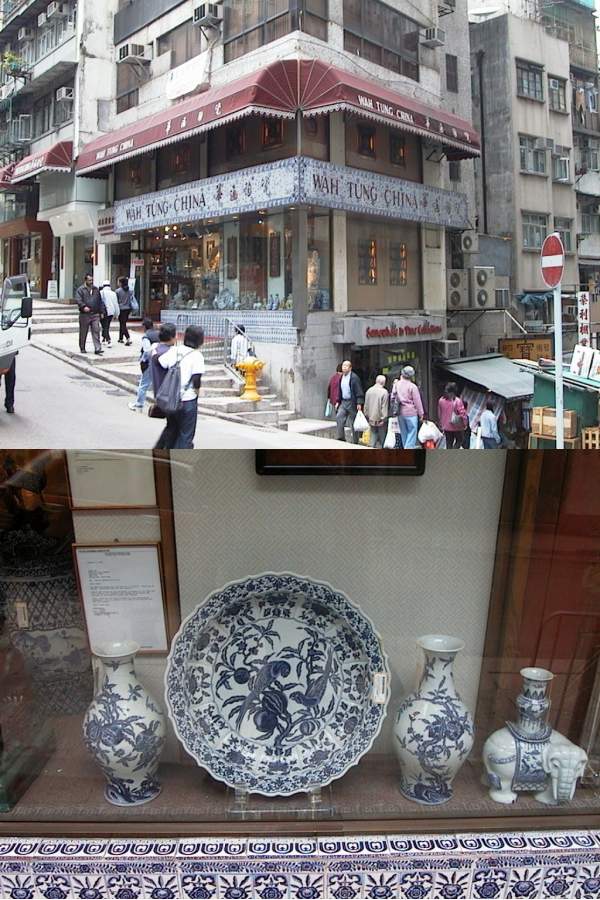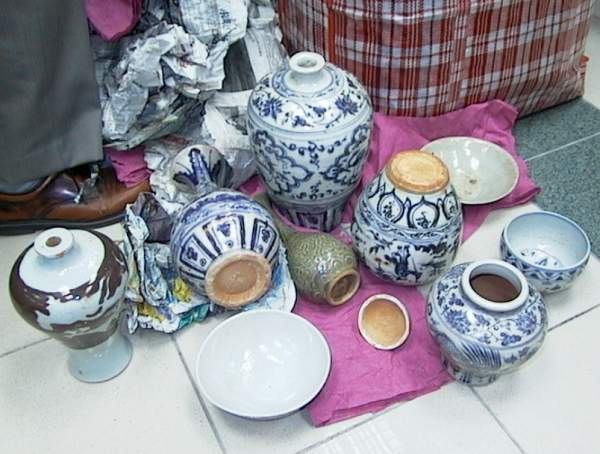 Back to Gotheborg.com Home Page
Back to Gotheborg.com Home Page
Copyright © Jan-Erik Nilsson, Gothenburg, Sweden 1998-2023


Hong Kong is the Antique Chinese porcelain metropolis of the world. Among the millions of pieces I found here my impression is that most is really ok of the earlier pieces - mostly pottery (1 out of 10 is a fake), while the opposite seems to be true regarding porcelain (9 out of 10 is a fake or at least "not as represented").
The prices here seemed to be pretty much the same here as in the rest of the world when looking at the top quality prices. The Hong Kong dealers are well aware of the International prices, they read the same auction catalogues as everybody else, and what could be had cheap was as some put it just "crap".
Shops filled to the roof were found to be selling only late replicas and among whatever "old" early 20th century porcelain was presented as Yongzheng, etc.
A positive surprise was the Wah Tung China store, Hong Kong, we have been discussing earlier on the list, which turned out to be a perfectly legit manufacturer and seller of most seriously conceived replicas. I.e. nothing we should be concerned with as fakes - rather the contrary. My best recommendations, should you ever want to buy a nice - and clearly stated as such - replica.

Wah Tung China porcelain store in Hong Kong selling nice
and clearly stated as such, replicas.
Photo © Jan-Erik Nilsson 2001
The difference between their pieces was mostly in the style of the decorations. the brushwork was good but made by "another artist" then the originals. As for shapes, glazes , weights etc. no real efforts had been made to arrive at anything that would be conceived as a "fake". They were manufacturing and selling replicas and that's it and they were quite good at that. Besides, as compared to the fakes sold at our favorite Internet auction site, these pieces was way too expensive to make it profitably. The Internet fakes comes from somewhere else.
Some true blue fake dealers (quite fun when spotted) were met with. They were selling difficult to spot early Ming pieces, clearly manufactured as fakes in China. This place we called "The fake master". So far as up until this shop I could not say there were anything unethical going on. The dealer was quite open about it and was quite happy selling whatever he had. Some low quality genuine pieces and 9 out of 10 whopping "fakes" with all intent to deceive - sold as was off the sidewalk - at US $50-100 before negotiations.

Every single piece on this picture is a hard to spot fake, except the Qingbai top right, which is ok but damaged and of low quality. These pieces were clearly manufactured as fakes in China. The dealer was quite open about it and happy to sell whatever the customer wanted. The prices asked were reasonable at US $50-100 before any negotiations.
Photo © Jan-Erik Nilsson 2001
As these pieces shows anyone needs to be well read up on whatever he wants to buy, since there is nothing in particular about these pieces that could easily tell the beginner that they are fakes, besides maybe the price. The more experienced might feel that they feel "wrong" in a wide sense but, to actually know that these are fakes, you will need to be a specialist.
The paste were ok, the glaze was ok with imperfections and all. The painting was similar to what is should be but a bit off - maybe the easiest to see. The bases were crude and covered with mud in a way early Ming pieces really very seldom are - but they still looked reasonably OK.
One small clue though, was the weight of the pieces - this the fakers can't judge from pictures and shards but I realize this is hard to learn if you don't have personal access to genuine pieces of this magnitude, so use common sense and beware.
To my big surprise - due to my lack of knowledge - the Hong Kong Island itself turned out to have had an important porcelain kiln - with an considerably production - since at least the end of the Ming dynasty and active until the first decades of the 20th century. The porcelains made here are depending on the Guangdong (Canton) area, but are still showing some individual characteristics which might make it possibly to identify them as a group. The Kiln site is not wholly excavated and what finds so far has been made indicates a small number of shapes. Further investigations might turn up some interesting data.
Jan-Erik Nilsson